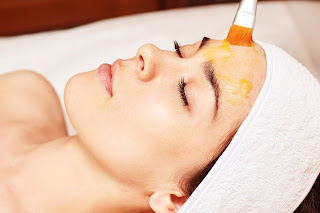The Science of Eyebrow Microblading: How Does It Work?
Eyebrow microblading has revolutionized the world of cosmetic enhancement, offering a semi-permanent solution to thin or sparse eyebrows. But what’s the science behind this innovative technique, and how does it work? In this blog, we’ll delve into the intricacies of eyebrow microblading to help you understand the process from start to finish.
Understanding the Basics
Eyebrow microblading is a semi-permanent cosmetic procedure that aims to create the illusion of fuller, perfectly shaped eyebrows. It involves using a manual hand tool equipped with fine needles to deposit pigments into the upper layers of the skin. These pigments mimic the appearance of natural eyebrow hair, resulting in a more defined and sculpted look.
The Skin’s Role
The top layers of our skin, known as the epidermis, play a vital role in microblading. The pigment is carefully deposited into the upper layers of the epidermis to ensure it remains semi-permanent. Over time, the body’s natural exfoliation process causes the pigments to fade gradually.
The Microblading Process
- Consultation: The process begins with a consultation where the client and the microblading technician discuss the desired eyebrow shape, color, and overall look.
- Mapping and Design: The technician uses measurements and guidelines to map out the perfect eyebrow shape based on your facial features.
- Numbing: A topical numbing cream is applied to ensure the procedure is as comfortable as possible.
- Microblading: The technician uses the microblading tool to create tiny, hair-like strokes by implanting the pigment into the skin. The depth is carefully controlled to prevent the pigments from reaching the deeper layers of the skin.
- Healing and Touch-Ups: After the initial session, there is a healing process, during which the pigmented area may scab and then peel. A touch-up session is usually scheduled after a few weeks to perfect the brows.
Pigment Selection
The choice of pigments is a crucial aspect of microblading. Technicians select pigments that match the client’s natural eyebrow color or desired shade. These pigments are specifically formulated for semi-permanent makeup and are hypoallergenic.
Longevity
The semi-permanent nature of microblading is a result of the pigments being placed in the epidermis, which is constantly shedding and renewing. This means that the color gradually fades over time, typically within 1–3 years, depending on factors such as skin type, lifestyle, and sun exposure.
Understanding the science behind eyebrow microblading sheds light on the precision and artistry involved in the procedure. If you’re considering microblading, ensure you choose a skilled and certified technician to achieve the best results. This innovative technique offers a natural and long-lasting solution to beautiful, well-defined eyebrows.



Comments
Post a Comment